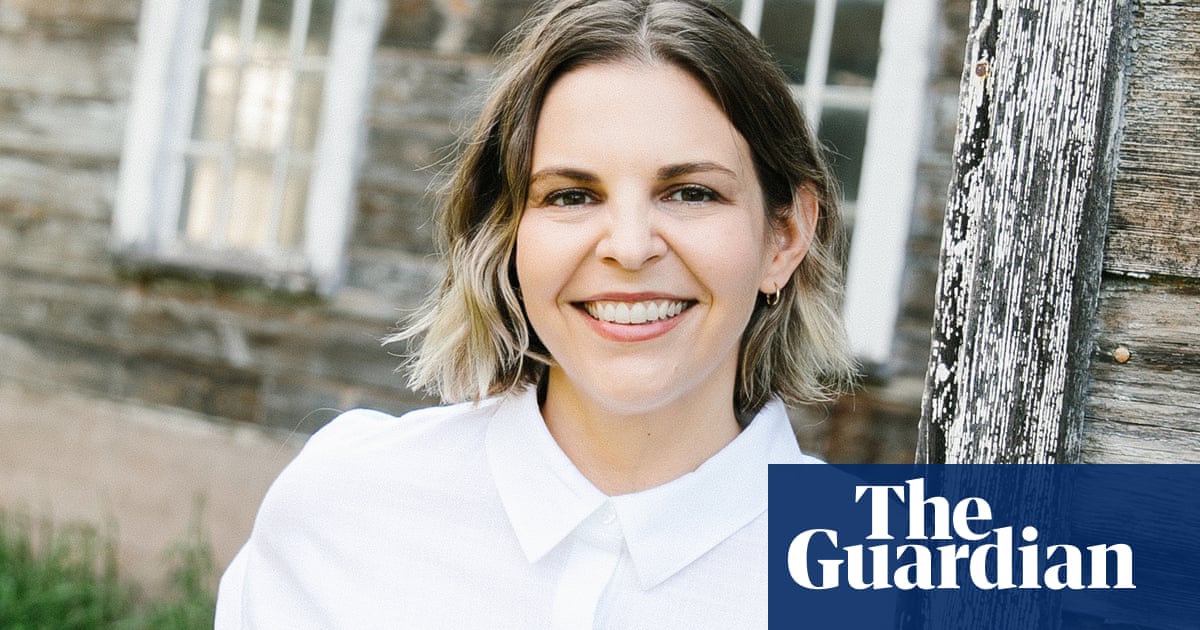
Horror fiction, says author Stephen Graham Jones, is booming right now. “It’s blooming, it’s blossoming. I mean, night blooms, of course, with a bloody centre. Probably some flies crawling over those petals.”
Jones, a Blackfeet Native American, should know: his terrifying tale about a spirit out for reveng, The Only Good Indians, swept the boards at last year’s horror fiction awards, taking both the Bram Stoker and Shirley Jackson awards for best horror novel. Opening as Ricky is beaten to death by white drinkers at a bar, the novel moves back in time to show how he and his friends slaughtered part of an elk herd on their reservation as teenagers, including one pregnant elk. Now they are dying, brutally, as adults, while asking if their past is catching up with them.
Jones has published over a dozen novels in the US, but The Only Good Indians was his first outing in the UK; George Sandison, who acquired it for Titan, said that “one breakneck fever dream of a read later, my mind astray in the North American wilderness, thunderclouds rolling, elk breath at my neck, I realised I had to buy it”.
British-American author Catriona Ward calls Jones: “a master stylist who takes risks with narrative boundaries, playing with the very idea of what horror is”. She adds: “I love that boldness. It’s what horror is for: finding new, boundary-breaking ways to share fear and empathy.”
Ward had already published two literary horror novels, Little Eve and Rawblood, when her latest work, The Last House on Needless Street, came out this year. A multi-layered dive into the heart of a horrific secret – complete with talking cat – it received a rave review from master of the genre Stephen King, who said he hadn’t “read anything this exciting since Gone Girl”.
“Horror is in a very exciting place,” says Neil McRobert, who hosts the Talking Scared podcast, which interviews some of horror fiction’s biggest names. He points to authors such as Jones, V Castro – whose Goddess of Filth sees four friends hold a seance, only for one of them to begin chanting in Nahuatl, the language of their Aztec ancestors – and Silvia Moreno-Garcia, whose Mexican Gothic is a deliciously creepy twist on gothic horror, set in 1950s Mexico (I adored it).
“[They] have all really pushed the envelope when it comes to new perspectives on the tradition, especially bringing in alternative folklores and marrying them with western – white – tropes,” says McRobert. “Slightly lesser-known writers like Cassandra Khaw are also making waves. Her recent novella Nothing But Blackened Teeth is a new take on J-horror, unmitigated by the usual western dilution. Meanwhile Zakiya Dalila Harris and James Han Mattson are writing really sharp, social-commentary horror that directly confronts the dangers of defaulting to white culture, in The Other Black Girl and Reprieve respectively.”
At Waterstones, buyer Bea Carvalho also recommends Mattson’s Reprieve, which features murder and a frightening haunted house escape room. “It’s an homage to classic horror with real social commentary at its heart – it really pays tribute to the genre as a whole, which I love,” says Carvalho. “It’s bang on for anyone who loves Squid Game.” She also recommends The Whistling by Rebecca Netley as “a remote, Scottish-set ghost story with real Hill House vibes”, as well as The Haunting Season, which collects scary tales by authors including Andrew Michael Hurley, Imogen Hermes Gowar and Bridget Collins.
“Horror can encompass anything from Saw to Shirley Jackson,” says Ward. “There’s this fantastic description of the gothic – that it is not a genre at all, but a virus that attaches itself to genres and infects texts, and also morphs through time and adapts as needed. I think horror perhaps could be seen as the same thing.”
Paul Tremblay, whose A Head Full of Ghosts is one of the scariest novels I’ve ever read (think a riff on Shirley Jackson with a possibly possessed teenager), says: “With so many new voices being published, there’s never been a more exciting time for horror readers.” Tremblay tips two debut novels: Violet Kupersmith’s Build Your House Around My Body, an “epic genre bender” in which two young Vietnamese women go missing decades apart; and Gus Moreno’s This Thing Between Us, “an inventive and genuinely creepy book about grief” in which a widower battles against the evil inhabiting his home smart speaker. Jones, meanwhile, is excited about Hailey Piper – her Queen of Teeth opens as a woman discovers teeth between her thighs – and Shane Hawk, whose Anoka is a collection of Indigenous horror stories.
Jonathan Sims, author of the twist on the haunted house story Thirteen Storeys, and the voice of horror podcast The Magnus Archives, says that: “the dwindling of many of the traditional pathways to publication” for the genre, such as short story magazines, over the last 20 years, means that “many of the most exciting, upcoming voices in horror are not on shelves, but online”, pointing to fiction podcasts such as PseudoPod and Nightlight. Adam Nevill, whose novel The Ritual was adapted for film, has more recently turned to independent publishing for his latest, Cunning Folk, in which a man suspects that his hostile new neighbours in rural south-west England are commanding malicious powers. “Horror, to all of my eyes, continues to thrive in most mediums,” says Nevill. “And is free of the tight yoke of ‘what’s hot right now’ on page and screen. Indie publishing and the streamers have opened the gates to the extent that it’s impossible to keep up with new releases, yet easy to avoid pastiche.”
Nevill tips Egaeus Press’s collection of tales of cursed dwellings, Crooked Houses, as, “the best multi-author collection I’ve read in years”, adding that “everyone with an interest in the uncanny should read Nathan Ballingrud’s first two collections”. These are: North American Lake Monsters, which won the Shirley Jackson award; and Wounds, which includes the novella The Visible Filth, adapted into the film starring Armie Hammer in 2019.
Ward believes that all good writing contains horror. “There’s always that little core of horror at the heart of human existence,” she says. “We’re not supposed to be afraid really, as grownups. We’re not allowed.
“Only children are afraid of things in the dark and things under the bed or have that kind of inchoate fear that doesn’t have any particular form; it’s the shadows in the back of the cave. Horror is a way for us to be able to engage with that fear as adults. I don’t think as a genre it gets enough credit for this, actually – it is a kind of healing thing; you walk through the darkness to the other side.”
Five books to read this Halloween
The Only Good Indians by Stephen Graham Jones
Ten years after an elk hunt, Ricky, Gabe, Lewis and Cassidy are being stalked by a vengeful spirit. Paul Tremblay calls this a “masterpiece”.
The Whistling by Rebecca Netley
Elspeth takes a position as a nanny on a remote Scottish island, where her charge, Mary, hasn’t spoken since the death of her twin William, and where something is stalking the empty corridors.
Nothing But Blackened Teeth by Cassandra Khaw
Cat and her friends spend the night in an old manor in Japan in search of the perfect wedding venue, but it is built on foundations of sacrifice and bone, and a ghost bride is hungry for them.
The Last House on Needless Street by Catriona Ward
Ted lives with his daughter Lauren and Cat Olivia at the end of an ordinary street, but 11 years ago, a little girl vanished on a family trip to a lake nearby, and Ted knows more about it than he’s letting on.
Reprieve by James Han Mattson
Can Bryan, Jaidee, Victor and Jane make it through all the escape rooms at “extreme haunt” venue Quigley House? They’ll win a big cash prize if they do, but there are more dangers in this house of horrors than they realise.












